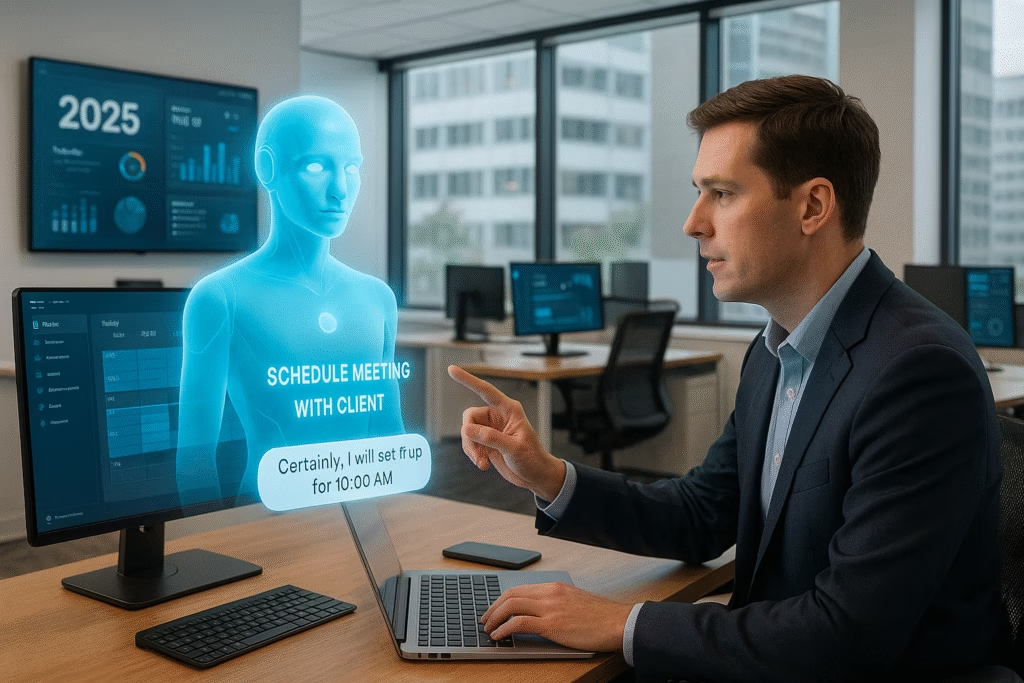How AI and Automation in 2025 Are Transforming Everyday America: Real Stories, Jobs, and Future Outlook
Introduction
In 2025, artificial intelligence (AI) and automation are no longer futuristic buzzwords—they are an active part of everyday American life. From small businesses in suburban Texas using AI scheduling tools to Wall Street firms implementing automated trading algorithms, the wave is everywhere. AI and automation in 2025 are reshaping how Americans work, learn, shop, and even relax. With rapid advancements in generative AI, robotics, and autonomous agents, the U.S. finds itself at a critical turning point. This article explores the real-world impacts of AI and automation in 2025 in America today, drawing from the latest developments, industry insights, and public sentiment.
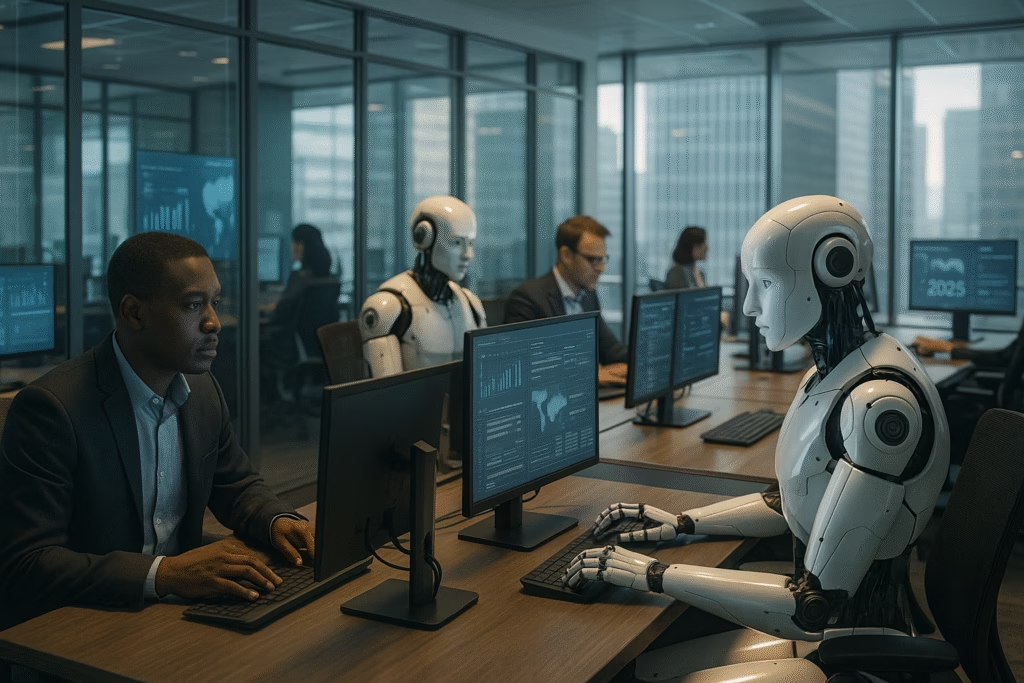
A Turning Point: Why 2025?
The year 2025 marks a defining moment for AI and automation in the United States. Recent studies show that over 60% of large U.S. companies have integrated AI in some form. Tech giants like Microsoft, Google, and Amazon have poured billions into AI infrastructure and tools. Sam Altman’s OpenAI has launched “Operator,” an advanced AI agent capable of handling complex business tasks, while Microsoft’s CoPilot is embedded across Office 365.
Public policy is also catching up. Although the U.S. declined to sign the AI Safety Accord in Paris, domestic regulation is heating up. State-level task forces are forming to address AI’s ethical use, data privacy, and employment impact.
In the private sector, companies like JPMorgan and IBM have already replaced thousands of jobs with AI agents, citing efficiency and scalability. Meanwhile, education platforms like Coursera and edX are rolling out AI-driven courses to train a future-ready workforce.
Real-World Automation: Sector by Sector
Workplaces & Corporate America
American offices are evolving fast. AI is now assisting HR departments with recruitment, onboarding, and even performance tracking. Many mid-level jobs are being automated, particularly those involving routine data entry or analysis. Firms like Shopify have let go of entire support departments, replacing them with AI chatbots.
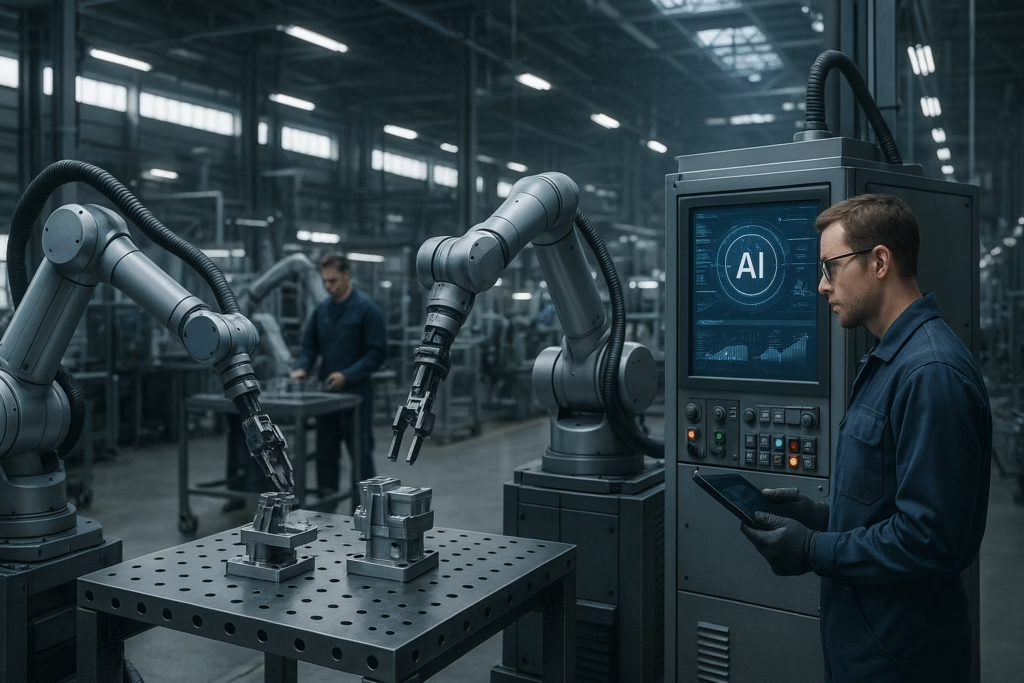
Manufacturing & Robotics
U.S. manufacturing has witnessed a surge in robotics—especially collaborative robots (cobots) that work alongside humans. Trump-backed initiatives have led to factories deploying high-speed automation lines, particularly in the Midwest. AI-driven predictive maintenance now prevents machinery breakdowns, saving millions.
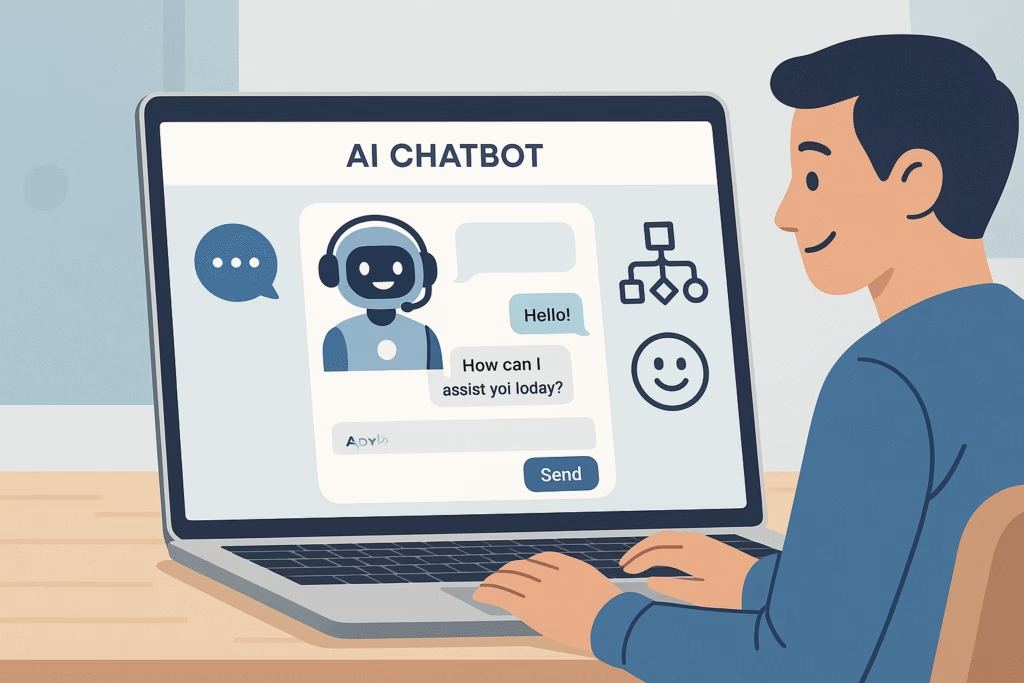
Customer Service & Retail
From Starbucks to online retailers, AI-powered chat and voice bots are handling customer interactions. 86% of consumers in a 2025 survey preferred quick AI assistance over long wait times for human reps. Walmart’s AI shopping assistant app is now used by over 40 million Americans.
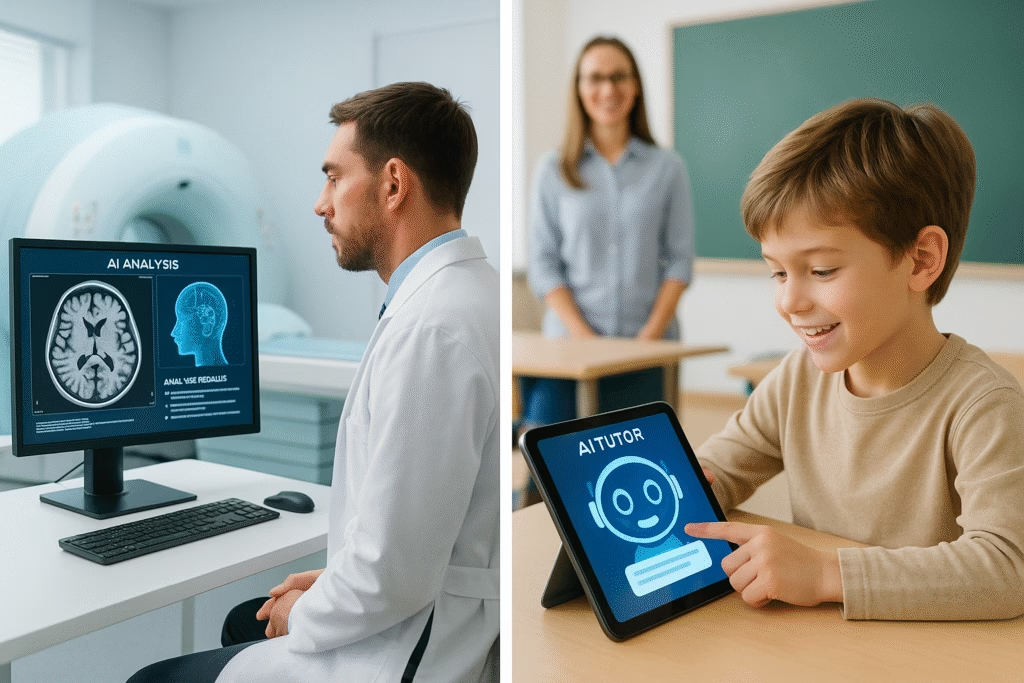
Healthcare, Finance, Education
Hospitals are employing AI for diagnostics, imaging, and robotic surgery assistance. In finance, robo-advisors are managing trillions in assets. Education systems, especially in public schools, are experimenting with AI tutors that adapt content to individual learning styles.
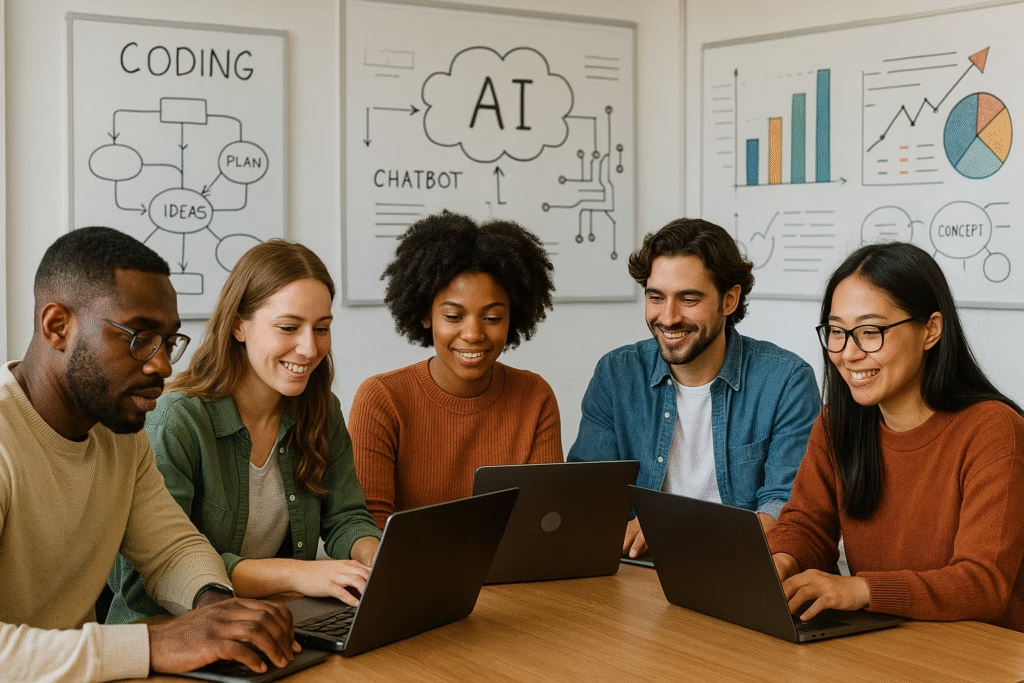
Jobs at Risk & Jobs Rising
The impact on employment is complex. While some jobs are vanishing, new roles are emerging. According to McKinsey, about 30% of current jobs will be automated by 2030. Entry-level and repetitive jobs are the most vulnerable.
However, careers in AI, data science, cybersecurity, and prompt engineering are booming. Universities are adapting, offering AI-centric degrees. Skilled trades involving AI-enabled machinery (e.g., drone maintenance, smart factory ops) are seeing high demand.
Young Americans are encouraged to learn prompt engineering, data analytics, and ethical AI frameworks to stay relevant.

AI Agents in Action
AI agents like OpenAI’s Operator and Microsoft’s CoPilot are revolutionizing workflows. Operator acts like a digital employee—it can answer emails, schedule meetings, and even coordinate with suppliers. MCP, the “memory-context processor,” gives these agents long-term memory and real-time awareness.
Use cases span from law firms to logistics companies. In customer support, these agents resolve issues in seconds. In logistics, they plan efficient routes, cutting fuel costs by up to 20%.
AI tools like OpenAI’s Operator and Microsoft Copilot are revolutionizing workflows. If you want to discover more such tools, check out our list of the Top 10 AI Tools in 2025. QUZEO
Economic & Social Impacts
While AI boosts productivity, it also widens inequality. High-income, tech-savvy workers gain, while those in manual or routine jobs face displacement. Some cities have launched pilot Universal Basic Income (UBI) programs to cushion the impact.
AI-driven growth has sparked a new digital divide. In response, the federal government has launched “AI for All,” a digital literacy campaign targeting rural and low-income communities.
Ethics, Regulation & Policy
The U.S. remains cautious about over-regulating AI. However, public outcry over biased algorithms and surveillance has led to increased scrutiny. Several states are drafting legislation to ensure algorithmic fairness, transparency, and accountability.
Privacy remains a key concern. The Federal Trade Commission (FTC) has fined companies for misusing biometric data and location tracking. Congress is debating a national AI Ethics Act.
What Americans Can Do
To stay competitive, Americans must adapt. Experts recommend:
- Upskilling in AI, coding, and analytics
- Embracing lifelong learning
- Understanding digital tools (e.g., GPT, Copilot, Claude)
- Exploring remote AI jobs
Free resources abound—YouTube tutorials, online bootcamps, and AI internships are now more accessible than ever.
Future Outlook
By 2030, AI is expected to contribute $15 trillion to the global economy, with the U.S. leading innovation. Infrastructure projects like Stargate (AI data centers) will redefine energy and computing landscapes.
AI won’t eliminate humans—it will empower those who adapt. As with any technology revolution, those who learn and evolve will thrive.
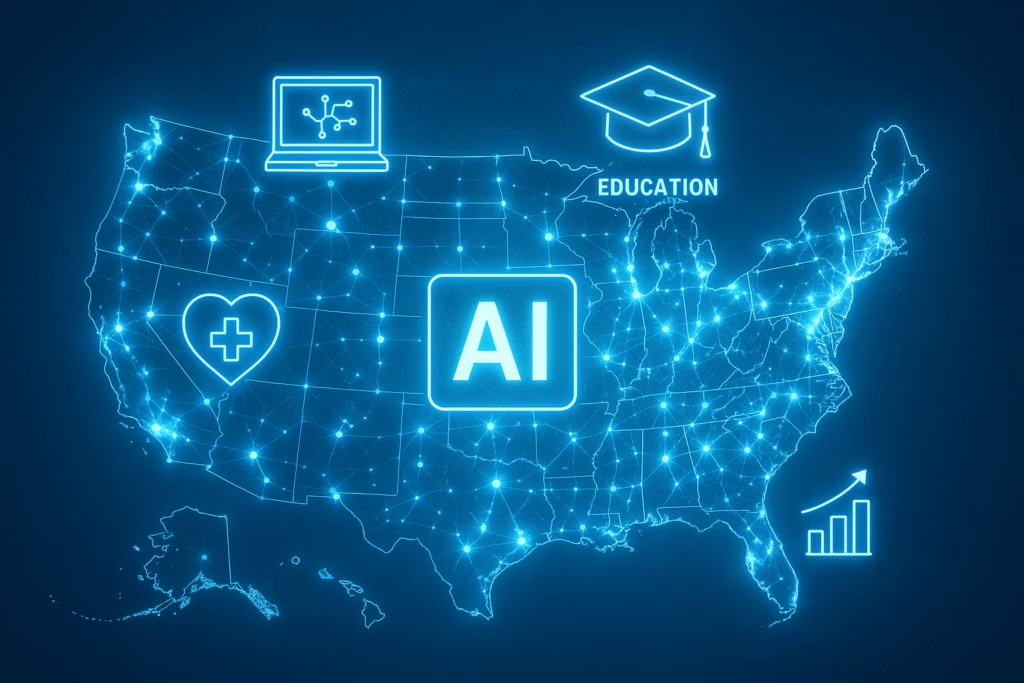
Conclusion
AI and automation in 2025 are not science fiction—they are today’s reality. From your local coffee shop to Wall Street, intelligent systems are hard at work. The challenge for America is clear: embrace the change, prepare its people, and lead responsibly.
Now is the time for every American—student, worker, policymaker—to understand and engage with AI and automation in 2025. Because the future isn’t waiting. It’s already here.
